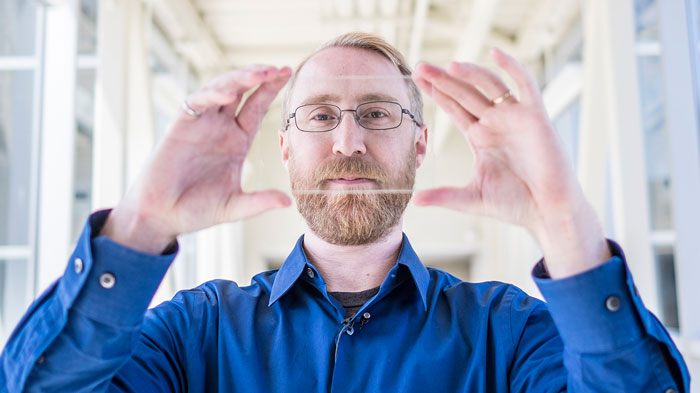A research team, lead by engineers from Michigan State University (MSU), have been impressed by their findings regarding the potential of highly transparent solar cells. Looking at the whole of the US electricity demand the MSU team reckon combined with rooftop solar the use of transparent solar in windows could nearly meet domestic requirements and drastically reduce the use of fossil fuels.

“Highly transparent solar cells represent the wave of the future for new solar applications,” said Richard Lunt, the Johansen Crosby Endowed Associate Professor of Chemical Engineering and Materials Science at MSU. “We analyzed their potential and show that by harvesting only invisible light, these devices can provide a similar electricity-generation potential as rooftop solar while providing additional functionality to enhance the efficiency of buildings, automobiles and mobile electronics.”
MSU scientists consider the thin, plastic-like material of these transparent solar cells to be suitable not just for windows of offices and dwellings but also for car windows, cell phones or other devices with a clear surface. Absorbing invisible wavelengths of light (like infra red and ultra violet rays) to generate energy, the transparent solar cells are about 5 per cent efficient. Opaque cells as used in roofing systems can of course harvest more light, and their efficiency levels are typically about 15 to 18 per cent. The MSU team reckon they can improve the transparent solar cell efficiencies as they are estimated to be only working at approx a third of their potential.

Prof Lunt points out one further reason that transparent solar lags in efficiency ratings right now; this particular solar tech has only been researched for approx five years, compared to five decades for traditional solar cells. Nevertheless, the MSU team have developed and tuned organic molecules that pick up just the ultraviolet and the near-infrared wavelengths before converting this energy into electricity and regard the tech as a significant untapped energy source and a “wave of the future”.













